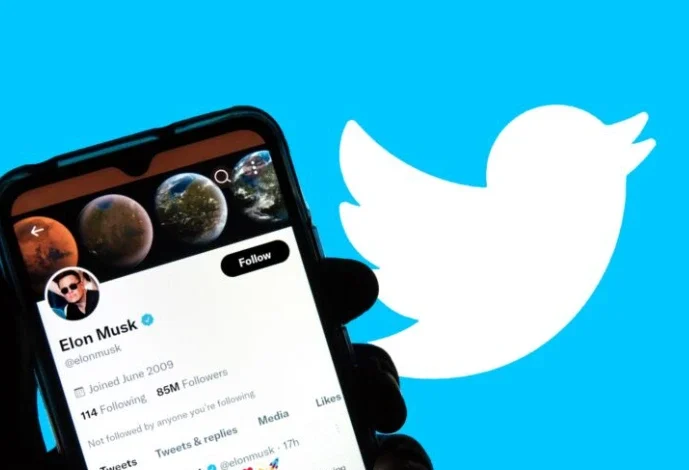rajkotupdates.news:deal-got-in-trouble-due-to-fake-spam-account-of-twitter

rajkotupdates.news:deal-got-in-trouble-due-to-fake-spam-account-of-twitter has become an essential platform for businesses to reach out to their target audience, but it’s not always smooth sailing. Recently, a fake spam account caused trouble for a popular company known as Deal. The incident raised concerns about the authenticity of social media accounts and how they can affect business operations. In this blog post, we will delve into the details of what happened with Deal and explore ways in which such situations can be prevented from occurring again in the future. So grab your coffee and let’s dive right in!
rajkotupdates.news:deal-got-in-trouble-due-to-fake-spam-account-of-twitter
A fake spam account is a social media profile that impersonates someone or something else for malicious purposes. These accounts usually have little to no followers and tend to send out numerous unsolicited messages with the intention of scamming users. They can also be used by hackers to spread malware or steal personal information from unsuspecting victims.
Often, these accounts will use stolen images and credentials of legitimate businesses or individuals in an attempt to appear trustworthy. Spam accounts may target individuals through direct messages or post fraudulent content on their timelines, thus creating confusion among their genuine followers.
Fake spam accounts are not just limited to Twitter; they exist across various social media platforms such as Instagram, Facebook, LinkedIn and others. It’s essential for every user on any platform always to scrutinize requests before accepting friend requests from unknown profiles.
Dealing with fake spam accounts ultimately falls upon the platform provider who must take appropriate measures against them while educating users about how best to avoid falling prey.
How did the fake spam account get created?
The creation of a fake spam account is unfortunately not uncommon in today’s digital age. These accounts are created to spread false information, cause harm to individuals or businesses, or simply gain followers.
There are several ways in which a fake spam account can be created. One way is by using automatic software that generates usernames and passwords to create multiple accounts quickly. Another way is by stealing someone else’s identity and creating an account under their name.
In some cases, individuals may also create fake accounts themselves using pseudonyms or aliases as disguises. They may do this to avoid detection from authorities, competitors or even friends and family members who would otherwise disapprove of their online activity.
Fake spam accounts usually have little regard for accuracy or truthfulness when it comes to their content. This makes them perfect tools for spreading misinformation about people or organizations they target.
It’s important that social media platforms such as Twitter take steps to detect and remove these types of malicious accounts before they cause damage. Otherwise, innocent users like “Deal” could find themselves caught up in controversy through no fault of their own.
Why was the fake spam account created?
The creation of fake spam accounts on social media platforms is a common occurrence these days. These accounts are created with malicious intent and can cause severe damage to individuals, brands, and businesses. But why do people create these fake spam accounts?
One reason for creating fake spam accounts could be to gain an unfair advantage over competitors in the market. For instance, if a business creates a fake account to post negative reviews about its competitors, it might attract more customers to itself.
Another reason could be to deliberately tarnish someone’s reputation or damage their brand image. In some cases, political parties have been known to use bots or fake accounts on social media platforms during elections to spread misinformation about their opponents.
Hackers may also create fake spam accounts as part of phishing scams that trick users into revealing confidential information like usernames and passwords.
There are many reasons why people create fake spam accounts on social media platforms. It is essential for individuals and businesses alike always to remain vigilant against such fraudulent activities so that they don’t get caught up in any unfortunate situations.
How did Deal get in trouble?
The deal got in trouble due to the creation of a fake spam account on Twitter. This account was created by someone who had malicious intentions towards Deal and used it to spread false information about their products and brand. The tweets from this account were retweeted and shared by many users, which resulted in negative publicity for Deal.
The situation could have been avoided if Deal had been more proactive about monitoring its online presence on social media platforms like Twitter. They should have set up alerts or notifications that would inform them anytime someone mentioned their name or product on the platform.
Another factor that contributed to their troubles was the lack of verification procedures for new followers. Businesses need to verify the identity of every follower they get on social media platforms like Twitter, as some may be bots or fake accounts with malicious intent.
Businesses need to be vigilant when it comes to their online reputation management. By being proactive and implementing measures such as setting up alerts and verifying followers’ identities, companies can avoid falling victim to similar situations in the future.
What could have been done to prevent this from happening?
rajkotupdates.news:deal-got-in-trouble-due-to-fake-spam-account-of-twitter, it’s crucial for companies to have a strong social media policy in place. This includes guidelines on who can access and manage the company’s official accounts, as well as instructions on how to handle fake or spam accounts.
One way to avoid falling victim to fake spam accounts is by verifying all followers before engaging with them. This involves checking their profile information and activity level to ensure they are legitimate users. Another option is implementing software that can detect and flag suspicious or unusual account behaviour.
It’s also important for companies to regularly monitor their online presence and have a plan in place for addressing any negative comments or feedback received on social media platforms. By actively engaging with customers and responding promptly to concerns or complaints, businesses can help build trust with their audience while minimizing the risk of reputation damage.
Employees should be trained on how to recognize potential threats such as phishing emails or suspicious links that could lead to compromised security measures. Regular cybersecurity training sessions will keep your team updated about new scams and methods used by hackers nowadays so you’ll always stay ahead of the game!
Conclusion
The rajkotupdates.news:deal-got-in-trouble-due-to-fake-spam-account-of-twitter with Deal and the fake spam account on Twitter is a stark reminder of the importance of staying vigilant online. As businesses increasingly rely on social media for marketing and customer engagement, it’s crucial to take measures to protect your online reputation.
To prevent this kind of situation from happening in the future, businesses should consider implementing strict social media policies that prohibit employees from creating fake accounts or engaging in spammy behaviour. Regular audits of social media profiles can also help identify any suspicious activity before it causes damage.
Ultimately, dealing with a fake spam account can be a frustrating and time-consuming process. But by taking proactive steps to protect your brand’s reputation online, you can minimize the risk of falling victim to these kinds of scams and safeguard your business against potential harm.


